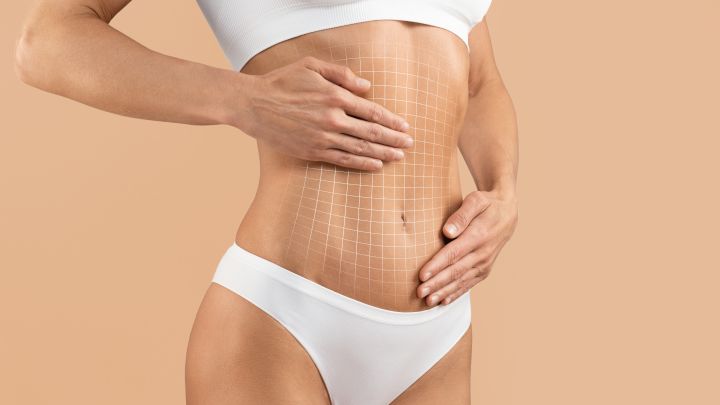The Advantages of Drainless Plastic Surgery
What are Surgical Drains?
Surgical drains are tubes placed after surgery that connect to a bulb or bag to remove fluid from the body. They are made of flexible plastic and placed through an incision which allows the tubing to exit the skin. Closed surgical drains use suction to draw fluid from the tubing into a collection bulb and the patient or caretaker will “milk” the tubing to prevent clogs and increase drainage from the body. Drains typically will stay in the body until the fluid decreases to a sufficient amount. Closed suction drains replaced previously used open suction drains in order to avoid soiling the patient’s clothing, skin, and bedding. As plastic surgery technique has evolved avoiding drains entirely has become a reality in a variety of cosmetic and reconstructive procedures.
Advancing Drainless Plastic Surgery in Dallas for Decades
The field of plastic surgery has evolved with significant advancements in technology and technique. Drainless surgery is one such technique that has multiple advantages including allowing for enhanced lymphatic flow, enhanced patient experience, and minimization of scarring and pain. Dr. Azouz has extensive experience in drainless plastic surgery and has performed drainless surgery in a variety of cosmetic procedures for many years. Dr. Azouz has been able to apply a drainless technique to many cosmetic procedures that he performs in his Dallas-based practice. Drainless plastic surgery can be performed procedures that were traditionally performed with drains including:
- Facelift
- Necklift
- Breast lift (mastopexy)
- Breast Augmentation
- Breast Implant Removal
- Breast Reduction
- Male Breast Reduction (Gynecomastia Surgery)
- Liposuction of the neck, chest, abdomen, and legs
- Abdominoplasty (Tummy tuck)
- Posterior Body Lift
- Fat Grafting
- Lipedema liposuction
- Thigh lift
- Combination plastic surgery: Mommy makeover, Daddy do over, Body lift

Preserving the Lymphatic System with Drainless Plastic Surgery
Drainless plastic surgery allows for improved lymphatic flow by allowing the lymphatics to work immediately after surgery. The lymphatic system is a network of vessels and lymph nodes that are critical in draining fluid and swelling from the body. Dr. Azouz also utilizes a variety of specialized methods and techniques including the use of tumescence, customized equipment, quilting sutures, specialized medications, and anesthetic techniques to preserve and protect the lymphatic system.
What are Quilting Sutures or “Progressive Tension Sutures”?
Quilting sutures or progressive tension sutures are a type of suturing technique used by plastic surgeons like Dr. Azouz to minimize “dead space” or the area between the skin and deeper layers of tissue where fluid can build up. Quilting sutures can also be helpful in reducing tension on the skin. The progressive tension suture technique allows the skin and soft tissues to heal closely together and help to prevent a problem called a “seroma”. A seroma is a fluid pocket that can form in areas of “dead space” where there is a pocket between the skin and soft tissue as it connects to the underlying structures. Progressive tension sutures can help to lower the risk of a seroma or fluid collection and can improve wound healing.
Optimizing Patient Experience with Drainless Technique
Patients want the best experience when they elect to have elective plastic or cosmetic surgery. Many studies have shown an enhanced and quicker recovery with drainless techniques. Dr. Azouz strives for the best surgical experience for all of his patients. Avoiding drains has helped to achieve this goal.
What Is the Problem with Suction Drains?
There are many disadvantages to suction drains. Surgical drains are usually sutured to the skin as they exit the skin. This means that the drains can cause irritation to the skin, painful pulling, and will lead to extra scarring. Drains must also be continually emptied and monitored as they fill with blood and fluid. Surgical drains can also become infected as bacteria can adhere to the drain or be introduced from the drain site where it leaves the skin. Drains can also inhibit a patient’s ability to walk and mobilize after surgery. Often patients report being scared that their drains will be ripped out as they stand, walk, or turn in their bed. Furthermore, drainless surgery facilitates patients to be more comfortable in their compression garments and allows for more even compression over the skin and soft tissue.
Azouz Plastic and Cosmetic Surgery is a leader in drainless plastic surgery; however, Dr. Azouz may elect to use a drain when necessary. The use of drainless surgery depends on the patient’s anatomy, medical history, and cosmetic needs. Drains can still offer benefits to select patients. Drainless surgery continues to become more available to a variety of plastic surgery patients thanks to advancements in the field.
Posted on behalf of
